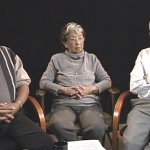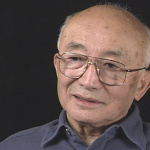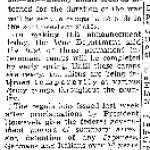Camp Livingston (detention facility)
| US Gov Name | Camp Livingston Internment Camp |
|---|---|
| Facility Type | U.S. Army Internment Camp |
| Administrative Agency | U.S. Army |
| Location | Alexandria, Louisiana (31.3000 lat, -92.4333 lng) |
| Date Opened | June 8, 1942 |
| Date Closed | |
| Population Description | Held internees of Japanese ancestry sent from the Department of Justice-run Fort Missoula internment camp and from the U.S. Army-run Fort Sill and Camp Forrest internment camps. |
| General Description | Located near Alexandria, Louisiana, north of Baton Rouge in the central part of the state. Hot and humid summer months with temperatures up to 130 degrees, poisonous reptiles, and stinging insects added to the hardship. |
| Peak Population | 1,123 (1943-03-12) |
| National Park Service Info | |
The army base at Camp Livingston, Louisiana, served during World War II as an internment camp for Japanese aliens from the United States and Latin America.
Founding
Camp Livingston, located about 12 miles north of Alexandria, Louisiana, was created in 1940. First known as Camp Tioga, it was renamed Camp Livingston in honor of Chancellor Robert R. Livingston, negotiator of the Louisiana Purchase. The camp formed part of a larger complex of military bases in Central Louisiana that included Camps Claiborne, Polk and Beauregard, as well as Esler Field.
Construction began September 15, 1940. The first soldiers arrived in early 1941, and by summer there were 27,500 soldiers based on approximately 900 buildings on the camp grounds, with 7,850 tents. In mid-1941, the camp was a site of the Louisiana Maneuvers, a 400,000-man training exercise involving two imaginary countries fighting each other.
During World War II, Camp Livingston served as an infantry replacement training center, as well as a garrison for infantry divisions. Camp Livingston was ultimately home to the 28th, 32nd, 38th and 86th Infantry Divisions. Eventually more than 350,000 men went through training at Camp Livingston. Throughout the war years, Camp Livingston and Camp Claiborne attracted large numbers of African American soldiers. By early 1942 there were 17,000 African American servicemen based at the two camps. There were repeated incidents of racially-charged violence. On January 10, 1942, a white military policemen arrested a black soldier in front of a local theater, leading to a "police riot" in which 26 black soldiers were shot or beaten by MPs and local police. In May 1942, in the so-called "Louisiana Scottsboro case," three black soldiers, Richard Philip Adams, Lawrence Mitchel and John Walter Bordenave, were convicted of attacking Anna Mae Mason, a waitress at a local restaurant. In 1944 Private Edward Green was shot and killed by Odell Lachney, the white driver of a bus he was riding.
Internment of Japanese Aliens
Following the outbreak of the Pacific War on December 7, 1941, the United States Army Provost Marshal General ordered Camp Livingston transformed to house enemy aliens and prisoners of war who were interned by the U.S. Justice Department. The internment facilities were designed to hold up to 5,000 German, Italian and Japanese aliens and POWs. At the end of May 1942, Japanese aliens from the Pacific Coast and Hawai'i began arriving. They had been initially interned at military facilities such as Fort Lincoln , North Dakota and Santa Fe , New Mexico before being switched to Justice Department custody. In June 1942 these men were joined by two additional groups of Issei men from Hawai'i who had been recommended for permanent internment. The first group of about 172 was transferred from Camp Forrest , Tennessee, while the second group of about 160 arrived from Fort Sill , Oklahoma.
Meanwhile, under an arrangement brokered by the U.S. State Department, ethnic Japanese men from Latin America were taken from their homes, placed in internment camps in Panama, and then shipped to the United States. After being held in the quarantine station at Algiers (New Orleans), Louisiana, these men were sent on to Camp Livingston beginning in June 1942. (The INS sent Latin American Japanese women to a separate camp at Seagoville , Texas.)
Alongside the civilians were Japanese prisoners of war. One of those held for a time at Camp Livingston was Kazuo Sakamaki, the only surviving crewman of a mini-submarine used in the Japanese attack at Pearl Harbor, who became the first Japanese POW in the United States.
At its peak, the camp held 1,123 internees of Japanese ancestry. The internment camp, situated on a hill in a thick forest, was made up of four sections, J1, J2, K1 and K2, with a fence between Blocks J and K. Among the earlier arrivals, the Hawai'i group was assigned to J2, the Panama (Latin American) group to J1 and mainlanders to Block K. The barracks were newly built small-sized structures that accommodated fifteen people each.
Among the internees were Fred Shizutaro Toyota, an Issei from McGill, Nevada, who had been arrested and interned after Pearl Harbor; Tomeseichi Akiyama, a leader of the Japanese Society in Hood River, Oregon; Yoshihiko ("Henry") Kasai, an insurance agent in Salt Lake City, Utah; and Heisaku Inaba, one of the leading Issei fishermen in the Terminal Island community. Perhaps the most celebrated of the Issei interned at Camp Livingston was Reverend Hiram Hisanori Kano, a Japan-born Episcopal clergyman from Nebraska who made the most of his time in a series of four internment camps by organizing a camp college (AKA internment university) and holding classes. As his son later recalled, "He saw in one of the camps that his fellow prisoners were many of the leaders of the Japanese community—many professors, doctors, lawyers, dentists and other professional people—and he organized a camp college and he invited all the people in the camp, including the guards, to attend these classes as they saw fit... My father also did nature studies and took groups of people out into the swamp in Louisiana and explained about the leaves on the cypress trees and the animals—the water moccasins, the alligators." [1]
To gain some relief from the extreme heat and humidity, the internees of Japanese ancestry dug shallow depressions in the dirt under the barracks and rested there during the hottest hours, or stripped to their underwear during the day. They also suffered the rain, chiggers and ticks. At night, poisonous snakes emerged, making a trip to the latrine potentially dangerous. Some internees were ordered to work in the nearby forest to cut pine trees to construct an airport, work for which they would not be paid. They refused on the ground that this was military work from which they were not liable under the Geneva Convention. In the end, the internees agreed to organize volunteers and cut only enough trees to provide firewood for themselves in camp. Others were told that they could volunteer for work in camp unrelated to the maintenance of the camp and would be paid ten cents per hour. Many internees and POWs worked in the surrounding tobacco and sugar fields.
Legacy
In mid-1943, the U.S. government moved the Japanese aliens at Camp Livingston to other camps. Meanwhile, Japanese American soldiers from the 100th Infantry Battalion were detailed for training at Camp Claiborne. (Ironically, various Nisei soldiers previously had visited fathers held in internment at Camp Livingston.) After the war ended in 1945, the army began work to transition the camp back to civilian use. It was placed on inactive status by the War Department on September 25, 1946, and workers demolished the buildings or moved them to other locations.
There has been little published material on the experience of the Japanese internees at Camp Livingston. Issei internee Kumaji Furuya devotes a chapter of his memoirs to his time there; see Suikei Furuya, Haisho tenten (Honolulu: Hawai taimususha, 1964). An English translation of this book will be published by the Japanese Cultural Center of Hawai'i in 2017. See also Keiho Soga 's memoir Life behind Barbed Wire: The World War II Internment Memoirs of a Hawai'i Issei (Honolulu: University of Hawai'i Press, 2008).
For More Information
Bonnye, Stuart. It Happened in Louisiana: Remarkable Events that Shaped History . Lanham, Md: Rowman & Littlefield, 2015.
Kashima, Tetsuden. Judgment Without Trial: Japanese American Imprisonment During World War II . Seattle: University of Washington Press, 2003.
Footnotes
- ↑ Pat McCaughan, "Legendary Japanese-American Priest Celebrated in Nebraska," Episcopal News Service, July 26, 2012, accessed on Sept. 16, 2016 at ://episcopaldigitalnetwork.com/ens/2012/07/26/legendary-japanese-american-priest-celebrated-in-nebraska/.
Last updated July 22, 2020, 3:55 p.m..





